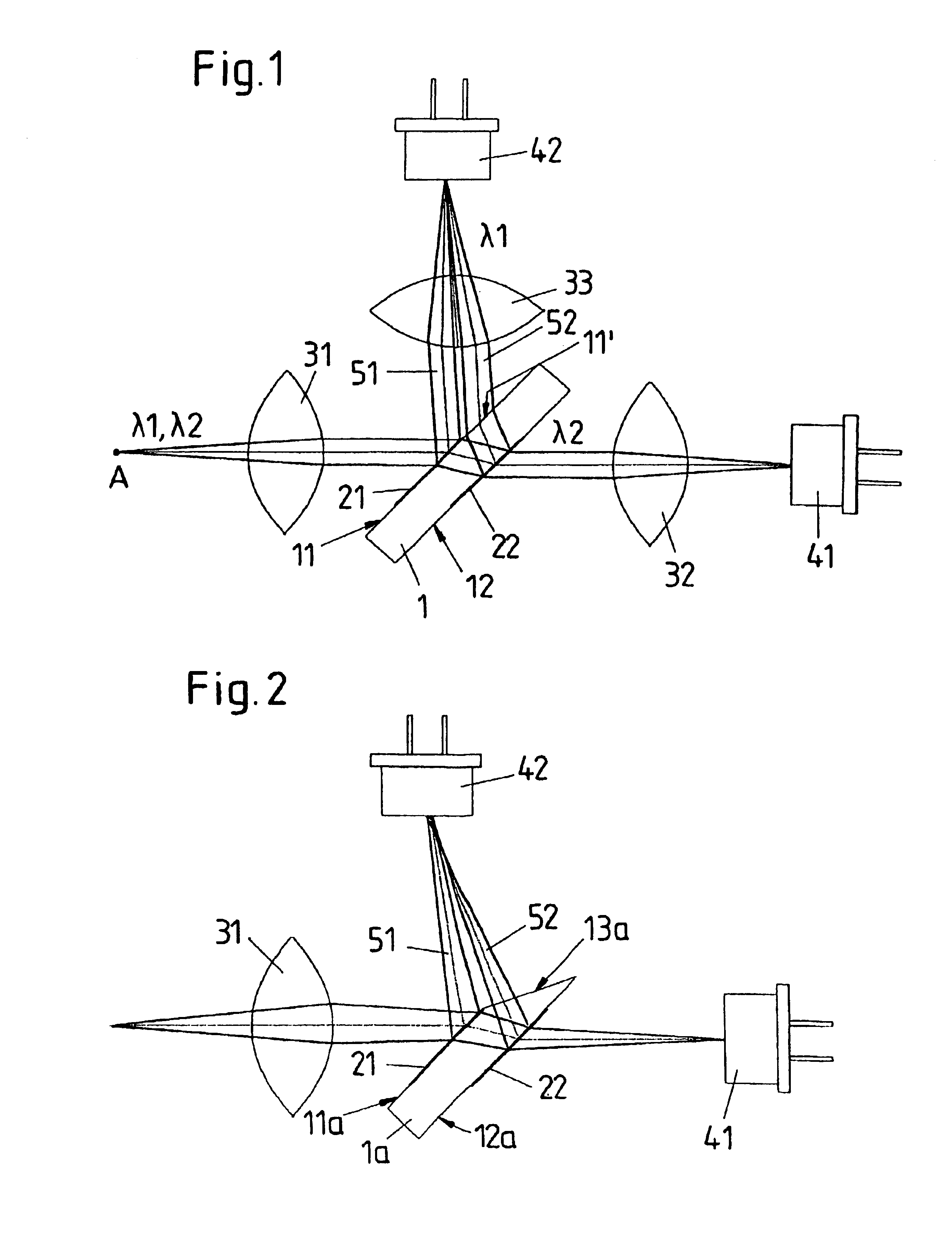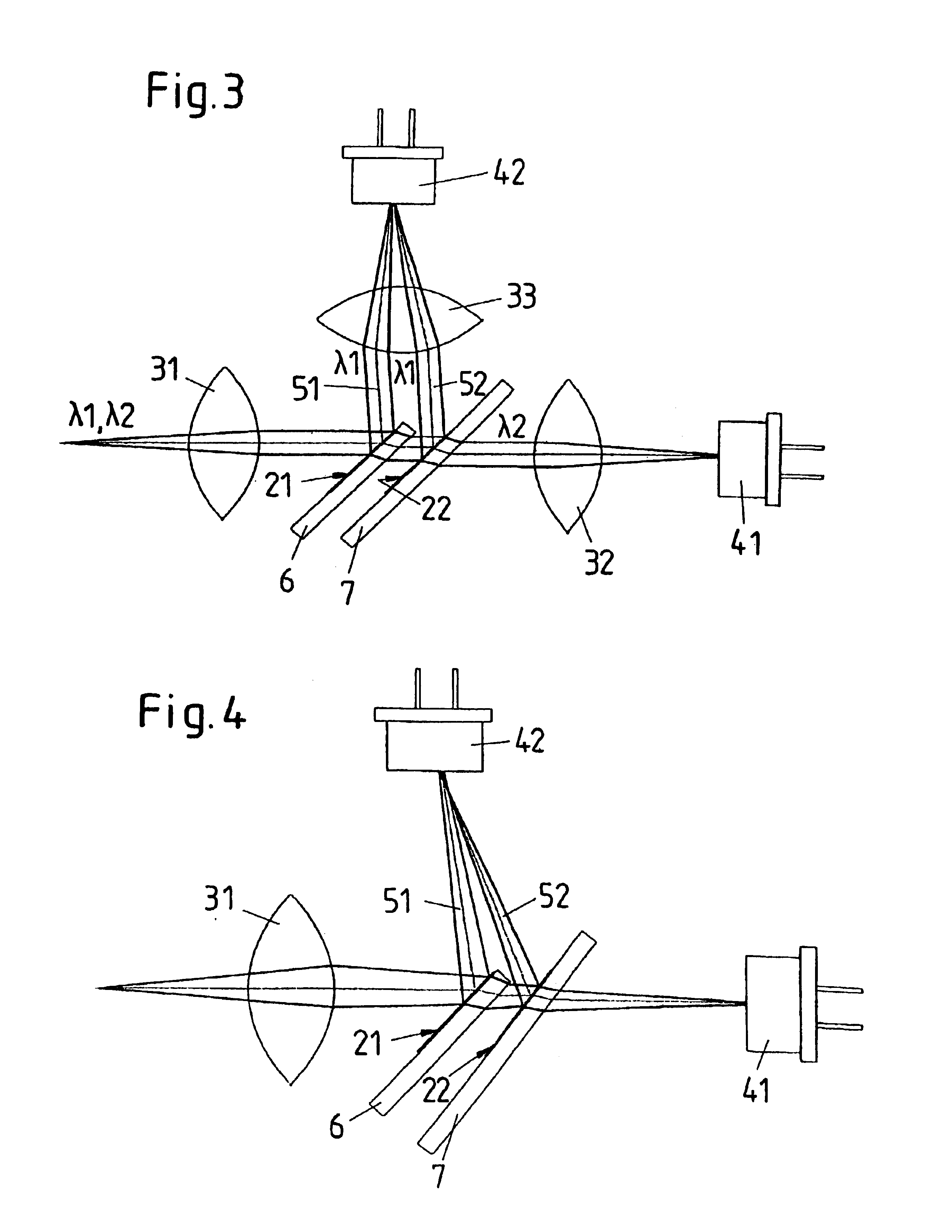Apparatus for demultiplexing optical signals at a large number of wavelengths
a technology of optical signals and amplifiers, applied in the field of apparatuses for demultiplexing optical signals at a large number of wavelengths, can solve the problems of loss of intensity, significant improvement of wavelength selectivity, creation of optical resonators, etc., and achieve the effect of reducing reflection
- Summary
- Abstract
- Description
- Claims
- Application Information
AI Technical Summary
Benefits of technology
Problems solved by technology
Method used
Image
Examples
Embodiment Construction
[0034]Referring now to the figures of the drawings in detail and first, particularly to FIG. 1 thereof, there is shown a first exemplary embodiment of an apparatus for demultiplexing optical signals having a substrate 1 that has two wavelength-selective filters 21, 22, three convergent lenses 31, 32, 33 and two receiving detectors 41, 42. As will be explained in detail in the following text, the apparatus is used to separate or to demultiplex light that propagates from a schematically shown point of origin A at two or more wavelengths into its spectral components.
[0035]In such a case, it is assumed that light that propagates from the schematically illustrated point of origin A has optical signal components at two wavelengths λ1, λ2. For example, the point of origin A represents an optical transmitter or the end of a light transmission path, in particular, of an optical waveguide. The first convergent lens 31 is used to form the divergent beam that originates from the point A into a ...
PUM
 Login to View More
Login to View More Abstract
Description
Claims
Application Information
 Login to View More
Login to View More - R&D
- Intellectual Property
- Life Sciences
- Materials
- Tech Scout
- Unparalleled Data Quality
- Higher Quality Content
- 60% Fewer Hallucinations
Browse by: Latest US Patents, China's latest patents, Technical Efficacy Thesaurus, Application Domain, Technology Topic, Popular Technical Reports.
© 2025 PatSnap. All rights reserved.Legal|Privacy policy|Modern Slavery Act Transparency Statement|Sitemap|About US| Contact US: help@patsnap.com



